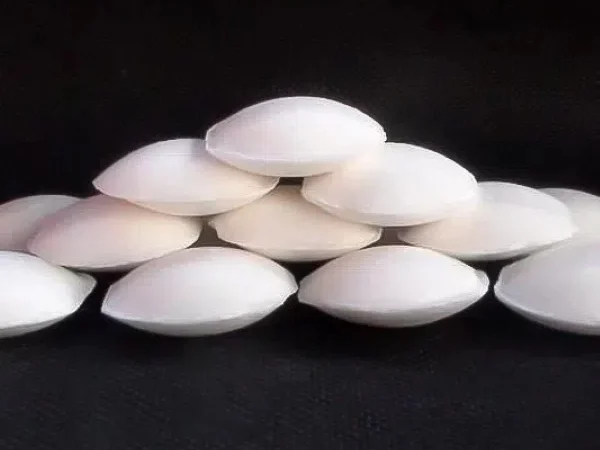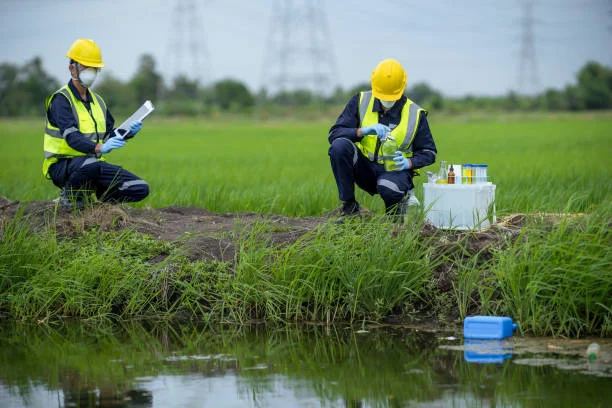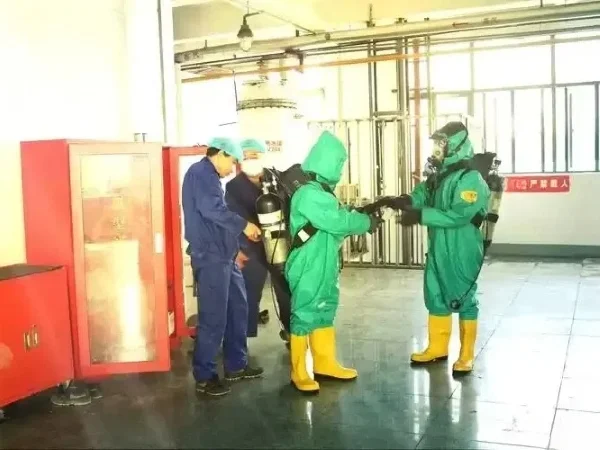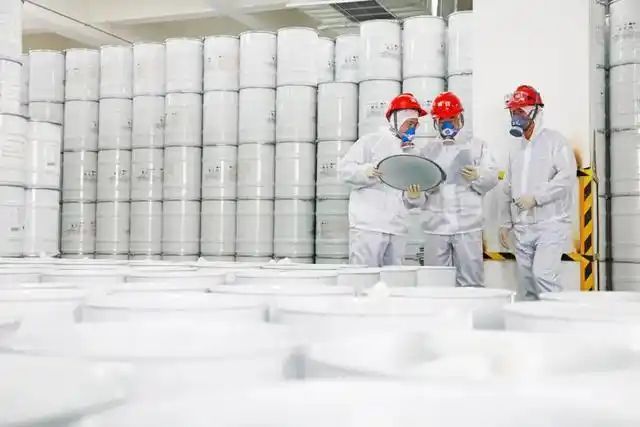
Introduction
Sodium cyanide, a chemical compound with the formula NaCN, is widely used in various industries due to its unique chemical properties. However, it is also known for its high toxicity, which raises concerns about its safe use and potential impact on the environment. This article aims to explore how Sodium cyanide can be used scientifically to minimize risks and prevent any harm to the environment.
Properties and Applications of Sodium Cyanide
Chemical Properties
Sodium cyaide is a white, crystalline solid that is highly soluble in water. It contains the cyanide ion (CN-), which is responsible for its toxicity. In the presence of acids, Sodium Cyanide can release hydrogen cyanide gas, a volatile and extremely toxic substance.
Industrial Applications
1.Mining Industry
In the gold mining sector, sodium cyanide plays a crucial role in the extraction of gold from ore. The process, known as cyanidation or cyanide leaching, has been the dominant gold extraction technology since the 1970s. A dilute solution of sodium cyanide, typically ranging from 100 ppm to 500 ppm (0.01% to 0.05% cyanide), is used to selectively dissolve gold from the ore. The two most common processes that use cyanide for gold recovery are heap leaching and milling (also known as carbon - in - leach, CIL). Although extensive research has been carried out, no other chemical reagent has been found to match the economic and environmental qualities of cyanide in precious metal recovery. Mines, as part of their best practices, use as little cyanide as possible for environmental, safety, and economic reasons. After the gold is dissolved, the solutions are further processed to recover the gold, which is then smelted into gold bullion.
2.Electroplating Industry
In electroplating, sodium cyanide is used to enhance the quality of the plating process. It can reduce the anode polarization, ensuring the normal dissolution of the anode. This helps to stabilize the plating solution and increase the cathode polarization, resulting in a more uniform plating layer.
3.Chemical Synthesis
Sodium cyanide is a key raw material for the production of a wide range of chemicals. For example, it is used to produce important inorganic cyanides such as yellow prussiate of soda, yellow prussiate of potash, potassium cyanide, zinc cyanide, barium cyanide, cuprous cyanide, sodium thiocyanate, and potassium thiocyanate. In the organic chemical industry, it is used to synthesize compounds like cyanoacetic acid, malononitrile, methionine, cyanobenzyl, and cyanuric chloride.
Scientific Use of Sodium Cyanide
Safe Handling in the Workplace
1.Personnel Training
All personnel handling sodium cyanide must receive comprehensive and specialized training. They should be thoroughly familiar with the properties of sodium cyanide, including its toxicity, potential hazards, and safety procedures. Training should cover aspects such as proper storage, transportation, and emergency response in case of spills or leaks. For example, they need to know that sodium cyanide should be stored in a cool, dry, well - ventilated area, away from sources of heat, flames, and acids.
2.Engineering Controls
Workplaces where sodium cyanide is used should have strict engineering controls in place. This includes providing adequate local exhaust ventilation to remove any potentially harmful fumes or gases. For instance, in gold mining operations where cyanide solutions are used, the leaching areas should be equipped with powerful ventilation systems to prevent the accumulation of hydrogen cyanide gas, which may be generated if the cyanide comes into contact with acids. The ventilation systems should be regularly maintained and monitored to ensure their proper functioning.
3.Personal Protective Equipment (PPE)
Workers handling sodium cyanide should always wear appropriate PPE. This includes chemical - resistant gloves, protective clothing, and respiratory protection. In areas where there is a risk of exposure to airborne cyanide, workers should use respirators with appropriate filters. For example, in electroplating facilities, workers should wear full - body protective suits made of materials that are impermeable to sodium cyanide solutions to prevent skin contact.
Process Optimization
1.Precise Chemical Reactions
In industries such as gold mining, optimizing the cyanidation process is crucial. This involves carefully controlling the concentration of the sodium cyanide solution, the pH of the reaction environment, and the reaction time. By precisely adjusting these parameters, the amount of sodium cyanide used can be minimized while still achieving efficient gold extraction. For example, in some modern gold mines, advanced monitoring systems are used to continuously measure and adjust the pH of the cyanide leaching solution. This ensures that the reaction occurs under the most favorable conditions, reducing the overall consumption of sodium cyanide.
2.Recycling and Reuse
In processes that use sodium cyanide, efforts should be made to recycle and reuse the chemical. In gold mining, for example, after the gold has been extracted, the solutions containing residual cyanide can be treated using various chemical and physical methods to recover the cyanide. Technologies such as ion exchange and membrane filtration can be used to separate the cyanide from other components in the solution, allowing it to be reused in subsequent leaching operations. This not only reduces the cost of using sodium cyanide but also decreases the amount of waste generated.
Preventing Environmental Impact
Treatment of Tailings and Waste Solutions
1.Cyanide Destruction in Tailings
In the mining industry, tailings slurries and solutions containing leached material, water, and residual cyanide need to be treated before discharge. Different chemical and physical methods are used to reduce or remove the cyanide left over from the gold dissolution process. One common method is the use of hydrogen peroxide, which can oxidize cyanide to non - toxic products. In some cases, biological treatment methods can also be employed, where certain microorganisms are used to break down cyanide. For example, some bacteria are capable of metabolizing cyanide and converting it into less harmful substances.
2.Regulatory Compliance
Local, state, and national regulations play a crucial role in limiting the amount and concentration of cyanide that can be discharged into the environment. These regulations vary by jurisdiction but generally require strict control over the disposal of cyanide - containing waste. For instance, in many regions, the maximum allowable concentration of cyanide in tailings facility discharges is set at very low levels, often in the range of 0.2 to 0.5 parts per million (ppm) or 0.00002% to 0.00005% cyanide. Mines and other industries using sodium cyanide must comply with these regulations to prevent environmental pollution.
Monitoring and Emergency Preparedness
1.Environmental Monitoring
Regular and comprehensive environmental monitoring is essential to detect any potential release of sodium cyanide into the environment. In areas where industries using sodium cyanide are located, monitoring stations can be set up to measure the concentration of cyanide in air, water, and soil. For example, in a mining area, water samples from nearby rivers and streams can be regularly tested for cyanide content. If any abnormal levels are detected, immediate action can be taken to identify the source of the contamination and prevent further environmental damage.
2.Emergency Response Plans
Industries using sodium cyanide should have well - developed emergency response plans in place. These plans should outline procedures for dealing with spills, leaks, or other accidents involving sodium cyanide. In case of a spill, appropriate containment measures should be taken immediately, such as using absorbent materials to soak up the spilled cyanide solution. Emergency response teams should be trained to handle such situations, and they should have access to the necessary equipment and chemicals for neutralizing and cleaning up the spilled sodium cyanide. For example, in the event of a large - scale spill, hydrogen peroxide or other neutralizing agents can be used to quickly react with the cyanide and reduce its toxicity.
Conclusion
Sodium cyanide is an important chemical in various industries, but its high toxicity requires careful and scientific handling to prevent harm to the environment. By following strict safety procedures, optimizing industrial processes, treating waste effectively, and implementing comprehensive monitoring and emergency response plans, the use of sodium cyanide can be made safe and environmentally friendly. This not only ensures the sustainable operation of industries that rely on sodium cyanide but also protects the ecosystem and public health.
- Random Content
- Hot content
- Hot review content
- Toxicity Assessment of Sodium Cyanide and Relevant Hazard Prevention Measures
- Sodium Metal, ≥99.7%
- Barium carbonate 99% powder
- Cobalt Sulphate Heptahydrate
- Fertilizer magnesium sulfate/magnesium sulfate monohydrate
- Di(ethylene Glycol) Vinyl Ether
- Calcium Chloride 74% Flakes
- 1Discounted Sodium Cyanide (CAS: 143-33-9) for Mining - High Quality & Competitive Pricing
- 2Sodium Cyanide 98% CAS 143-33-9 gold dressing agent Essential for Mining and Chemical Industries
- 3Sodium Cyanide 98%+ CAS 143-33-9
- 4Anhydrous Oxalic acid 99.6% Industrial Grade
- 5Soda Ash Dense / Light 99.2% Sodium Carbonate Washing Soda
- 6Oxalic acid for mining 99.6%
- 7Calcium hydroxide Industrial Grade 90%
- 1Sodium Cyanide 98% CAS 143-33-9 gold dressing agent Essential for Mining and Chemical Industries
- 2High Quality 99% Purity of Cyanuric chloride ISO 9001:2005 REACH Verified Producer
- 3 High-Quality Sodium Cyanide for Leaching
- 4Powdery emulsion explosive
- 5Industry Grade Electron grade 98% Sulfuric Acid H2SO4 Sulphuric Acid Battery Acid Industrial Sulfuric Acid
- 6Colloidal emulsion explosive
- 7sodium hydrosulfide 70% flakes used Mining Industry












Online message consultation
Add comment: